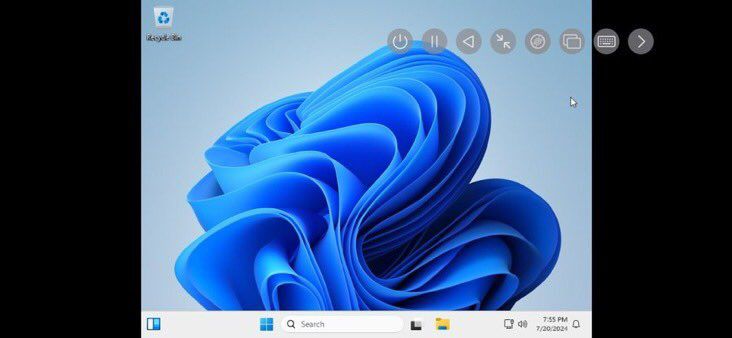Installing Windows 11 on iPhone 15 Pro is only experimental because the startup process and some other features are still limited.
Recently, a social network account X named @NTDEV posted a series of screenshots introducing the Tiny11 Core build of Windows 11 successfully installed on iPhone 15 Pro.
The specs simulated via the UTM SE PC emulator include a 1-core, 1 GHz virtual QEMU CPU and 2 GB of RAM, which isn't exactly the ideal operating environment for both Windows 11 and the iPhone 15 Pro, but it's an interesting demonstration of both devices' capabilities.
An important distinction to note before proceeding is that “emulation” and “virtualization” are two different concepts. Emulation simulates a specific hardware architecture and allows highly specialized software (software that is only released on specialized hardware platforms or outdated PC architectures) to run on platforms targeted by the emulator.
Meanwhile, virtualization can be used for emulation, but instead it focuses on the ability of supported hardware to create virtual pools of resources (CPU cores, RAM, etc.) dedicated to separate operating systems inside a virtual machine.

Looking closely at the screenshots, we can immediately see some limitations. For example, the resolution and aspect ratio are both cropped quite a bit compared to the entire iPhone screen, suggesting major limitations in emulation performance or configuration options.
All the screenshots show very limited single window use cases, although text rendering and the like seems to be fine.

As noted by @NTDEV, Windows 11 performance on the iPhone is nowhere near "usable." Taking twenty minutes to boot into any operating system on any modern device is unacceptable, and the iPhone doesn't have the same x86 software architecture or hardware optimization as Macs and Macbooks.

Still, it's pretty impressive to see Windows 11 running on an iPhone, especially given the much higher performance overhead of emulating different CPU architectures versus virtualizing the same standard architecture. But it's clear that the official iOS 17 and the upcoming iOS 18 will offer a more useful and visually interesting experience.


